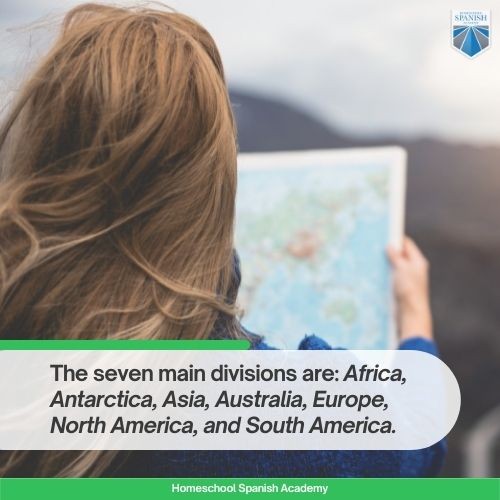The question “What Continent Is Mexico In?” might seem straightforward, but it often leads to a fascinating exploration of geography, culture, and identity. It’s a query frequently posed, particularly by those from North America who sometimes view Mexico as part of Central America, while individuals from Central America might lean towards categorizing Mexico as North American.
But what does geographical science actually dictate? And perhaps even more intriguingly, what do cultural nuances suggest?
Dive in to understand the multifaceted positioning of Mexico, both geographically and culturally, within the Western Hemisphere, and to decipher the complex interplay of geography, culture, and economics in defining Mexico’s continental role.
Mexico’s Unique Geographic and Cultural Situation
Mexico stands as a nation of captivating contrasts, boasting a rich and layered history and a vibrant, eclectic culture that seamlessly blends diverse influences. Its geographical location is particularly noteworthy, adding complexity to the simple question: “Is Mexico in Central America?” The answer isn’t as clear-cut as it might seem.
Let’s delve into Mexico’s unique geographical and cultural context to determine its place within the continents, addressing whether it truly belongs to North America or Central America.
Defining Continents: A Geographical Perspective
According to the widely accepted definition from National Geographic, a continent is defined as “one of Earth’s seven main divisions of land.” These seven continental divisions are globally recognized as Africa, Antarctica, Asia, Australia, Europe, North America, and South America.
Keep this established definition in mind as we delve into the continents of the Western Hemisphere and analyze where Mexico fits geographically.
North America: Extent and Boundaries
The Britannica Encyclopedia defines North America as the third-largest continent globally, stretching from the vast expanses of Alaska and Greenland in the north all the way south to the Isthmus of Panama.
By this definition, North America includes a diverse array of countries: Canada, the United States, Mexico, and further south into Central America, encompassing Guatemala, Belize, Honduras, El Salvador, Nicaragua, Costa Rica, Panama, and the Caribbean nations.
However, it’s important to note that geographical interpretations can vary. Some experts argue that the North American continent technically concludes not at the Isthmus of Panama, but further north at the Isthmus of Tehuantepec, located in southern Mexico.
This alternative perspective suggests that a portion of Mexico, specifically its southern regions, could be geographically considered part of Central America, a region with which Mexico undeniably shares significant historical and cultural links.
South America: Context for Comparison
While South America isn’t the focus of our central question, understanding its geographical position is crucial for providing context and clarity to the overall discussion of continental divisions in the Americas.
Again, referencing the Britannica Encyclopedia, South America ranks as the fourth-largest continent. It extends from Colombia in the north down to Cape Horn at the southern tip of Chile, nearing Antarctica.
The generally accepted list of South American countries includes Argentina, Bolivia, Brazil, Chile, Colombia, Ecuador, Guyana, Paraguay, Peru, Suriname, Uruguay, and Venezuela.
While certain lists might include French Guiana and the Falkland Islands, it’s important to recognize that these are not independent nations but overseas territories of France and the UK, respectively.
Central America: Region, Not Continent
It’s crucial to understand that, from a strict geographical standpoint based on the seven-continent model, Central America is not classified as a continent in itself. Instead, Central America is recognized as the “southernmost region of North America, lying between Mexico and South America.”
Central America geographically comprises seven countries: Guatemala, Belize, Honduras, El Salvador, Nicaragua, Costa Rica, and Panama. This region spans two primary time zones, Central and Eastern, and has a combined population of approximately 54 million people (excluding Mexico; if Mexico were included, the population figure would rise significantly to around 183 million).
The Latin America Distinction
Adding another layer to the discussion is the concept of Latin America. It’s important to clarify that Latin America isn’t a continent but rather a region defined by cultural and historical factors, primarily language and colonial history, rather than strict geographical boundaries.
Latin America encompasses all countries in the Americas that were colonized by Spain and Portugal and where Spanish or Portuguese are predominantly spoken. This definition stretches beyond the mainland to include Caribbean islands like Cuba and the Dominican Republic, while excluding mainland territories like Suriname and Guyana, where Dutch and English are the official languages, respectively.
For a deeper understanding of Latin America, resources are available to explore all the countries within Latin America and the Caribbean and to master the geography of Latin America with maps and lessons, which include country flags and downloadable maps of this culturally rich region in the Western Hemisphere.
Geography vs. Culture: A Blurry Line for Mexico
As we’ve seen, even geographers present slightly differing views on where to draw the continental lines, particularly concerning Mexico and Central America. While Central America isn’t a continent itself, it is a clearly defined region.
Some geographers consider this region to extend from the Isthmus of Panama northward to the Isthmus of Tehuantepec in Mexico. This implies that, from a purely geographical perspective, at least the southern part of Mexico could reasonably be considered part of Central America.
However, geography isn’t the only factor. Let’s consider the cultural and historical elements that contribute to Mexico’s complex identity.
Shared History with Central America
Mexico and Central America are bound by a significant shared history. During the three centuries of Spanish colonial rule, Mexico City served as the capital of New Spain, a vast viceroyalty. At its zenith, New Spain included present-day Mexico, large parts of the southwestern United States and Florida, all of Central America, and several Caribbean islands.
Furthermore, following independence from Spain, Mexico and the nations now forming Central America were briefly unified as a single, large nation stretching from California to Panama, as historical maps illustrate.
This shared history provides a compelling argument for closer ties between Mexico and Central America. However, relying solely on historical connections could lead to geographically inaccurate conclusions. For instance, applying the same logic might suggest that California, New Mexico, Texas, Arizona, Colorado, and Florida should also be considered part of Mexico due to their historical integration within New Spain.
Another significant historical link is the shared Mayan heritage. Both Mexico and Central America are home to rich Mayan civilizations, strengthening the argument for extending Central America geographically to the Isthmus of Tehuantepec in southern Mexico, as major Mexican Mayan sites are located south of this isthmus.
Intendencias del Primer Imperio Mexicano | © Hpav7/Wikimedia
Cultural Bridges: Language, Religion, and Cuisine
Beyond history, cultural factors further intertwine Mexico with Central America. Mexico shares fundamental cultural elements with Central American countries, most notably language (Spanish) and religion (predominantly Catholicism). Additionally, a shared culinary tradition centered around corn, particularly the ubiquitous tortilla culture, creates a strong cultural bond.
These shared cultural traits are arguably more unifying than those that bind many European countries within the European Union. One might expect these profound cultural commonalities to firmly place Mexico within Central America’s sphere of influence. However, other factors, particularly geopolitics and economics, play a significant role in shaping Mexico’s continental identity.
Geopolitical and Economic Alignment with North America
Mexico’s extensive border with the United States and the robust economic relationship it maintains with both the U.S. and Canada, primarily through the USMCA (United States-Mexico-Canada Agreement), previously known as NAFTA (North American Free Trade Agreement), firmly place Mexico within the North American geopolitical landscape. Geopolitically, Mexico is considered part of North America due to these strong ties.
Given that the United States is the world’s largest economy and Mexico’s largest trading partner, it’s understandable that Mexico’s primary focus, economically and politically, tends to be directed northward. This strong North American alliance often overshadows its cultural and historical connections to Central America in contemporary geopolitical considerations.
The Mexican Perspective: Identity and Belonging
It’s also insightful to consider how Mexicans themselves perceive their continental identity. Many Mexicans, including the author, do not primarily identify Mexico as part of Central America. Despite recognizing the shared cultural heritage, the stronger influence of contemporary North American pop culture, media, and economic realities often shapes personal perceptions of national identity.
Exposure to U.S. movies, sports, and music, coupled with frequent travel and close proximity to the United States, often results in a stronger sense of connection to North America. While acknowledging the importance of strengthening ties with Central American neighbors—economically and culturally—the prevailing self-perception within Mexico often leans towards a North American identity.
Ultimately, whether Mexico is definitively labeled as North American or Central American is, in many ways, just a matter of categorization. What truly matters is fostering collaboration and mutual growth among all nations in the Americas, striving to improve the lives of their people through shared efforts and understanding, regardless of continental labels.
Explore Mexico and Central America: A Cultural and Linguistic Journey
Both Mexico and the Central American countries are treasure troves of cultural richness and natural beauty. Visiting these regions offers a firsthand experience of their close interconnectedness and provides an excellent opportunity to practice Spanish.
One of the significant advantages of learning Spanish is the ease it brings to traveling through Mexico, Central America, and indeed, most of Latin America. Speaking Spanish enhances interactions with locals, enriches travel experiences, and allows for deeper cultural immersion.
Consider taking a free trial class with certified, native-speaking teachers from Guatemala, a Central American country. These instructors, from institutions like Spanish Academy, teach over 24,000 active students, offering flexible schedules and tailored Spanish programs to suit diverse learning needs.
Discover the Impact of Immersive Spanish Learning
“This is the best way for your kid to learn Spanish. It’s one-on-one, taught by native Spanish speakers, and uses a curriculum.”
– Sharon K, Parent of 3
“It’s a great way to learn Spanish, from native Spanish speakers in a 1-on-1 environment. It’s been fairly easy to schedule classes around my daughter’s other classes. The best value for us has been ordering multiple classes at a time. All the instructors have been great!”
– Cindy D, Parent of 3
“HSA offers very affordable, quality, one on one classes with a native speaker. My son has greatly benefited from taking classes. We have seen his confidence increase as well as his pronunciation improve, because he learns from a native Spanish speaker. HSA has quick, personal customer service. Our family has been very pleased with our experience so far!”
– Erica P. Parent of 1
Explore More About Latin American Culture
Follow me
Luis F. Dominguez
Freelance Writer at Homeschool Spanish Academy
Luis F. Domínguez is a freelance writer and independent journalist interested in travel, languages, art, books, history, philosophy, politics and sports. He has written for Fodor’s, Yahoo!, Sports Illustrated, Telemundo, and Villa Experience, among other brands of print and digital media in Europe and North America.
Follow me
Latest posts by Luis F. Dominguez (see all)
central america Hot Topics mexico america north america trending topics

